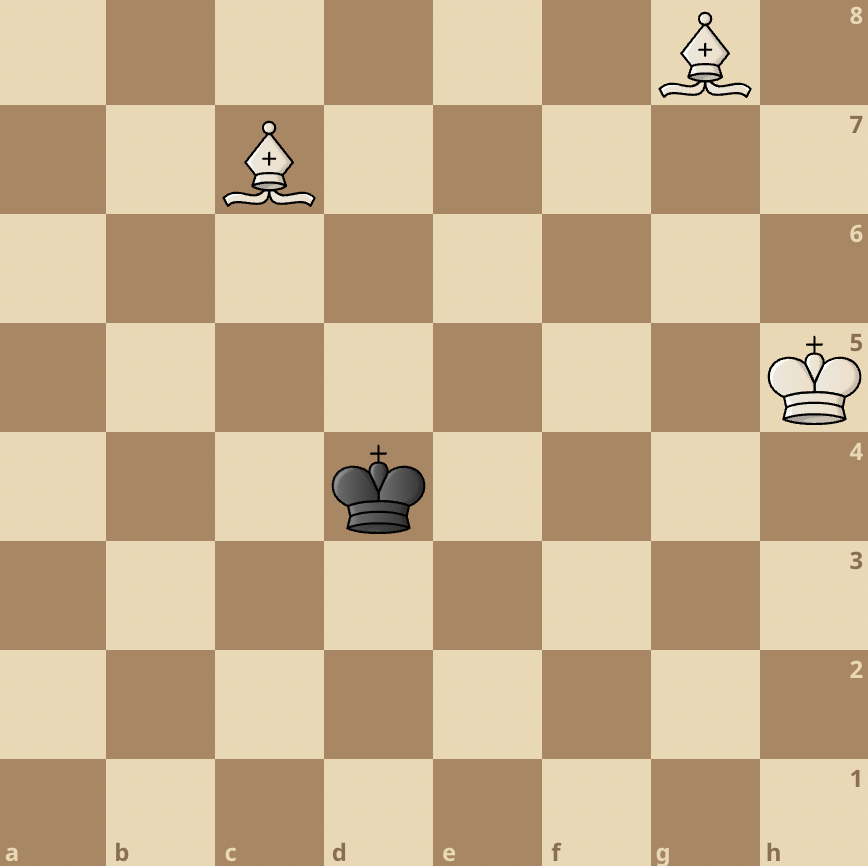
The king and two bishop checkmate is another basic checkmate that occurs in chess games.
While this type of mate is unusual in many games, it’s important to get familiar with the concepts of this checkmate just in case you happen to need it.
This is because the two bishop checkmate pattern is extremely technical and must be played with care to avoid stalemate.
To get a proper hang of this mating pattern, there are some rules to note.
Opposition
This is the first rule you need to understand to execute the two bishop mate.
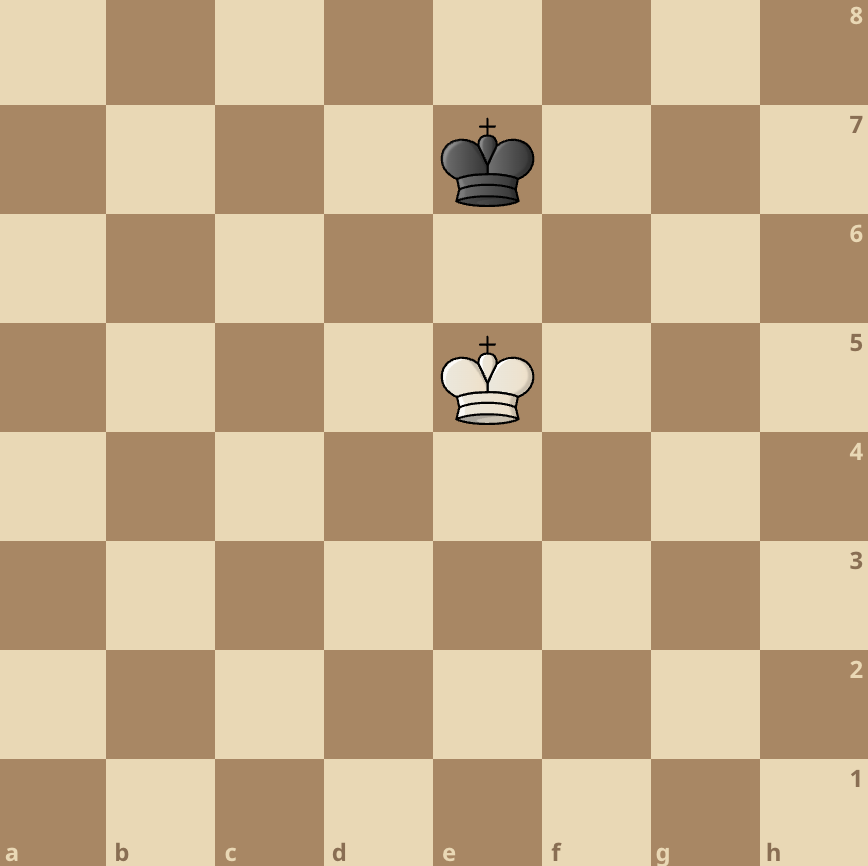
There can be no two bishop checkmate in an endgame without the help of a king.
How exactly does the king help?
Firstly, the dominant king must limit the flight squares of the distressed king by coming in close proximity with it.
In other words, one king is opposing the other so that the other gives away. We covered the subject of opposition more extensively in our endgame guide.
The dominant king also plays a crucial role in protecting the bishops that will deliver the final blow. Basically, this means that the king leads the charge to victory.
Pyramid Rule
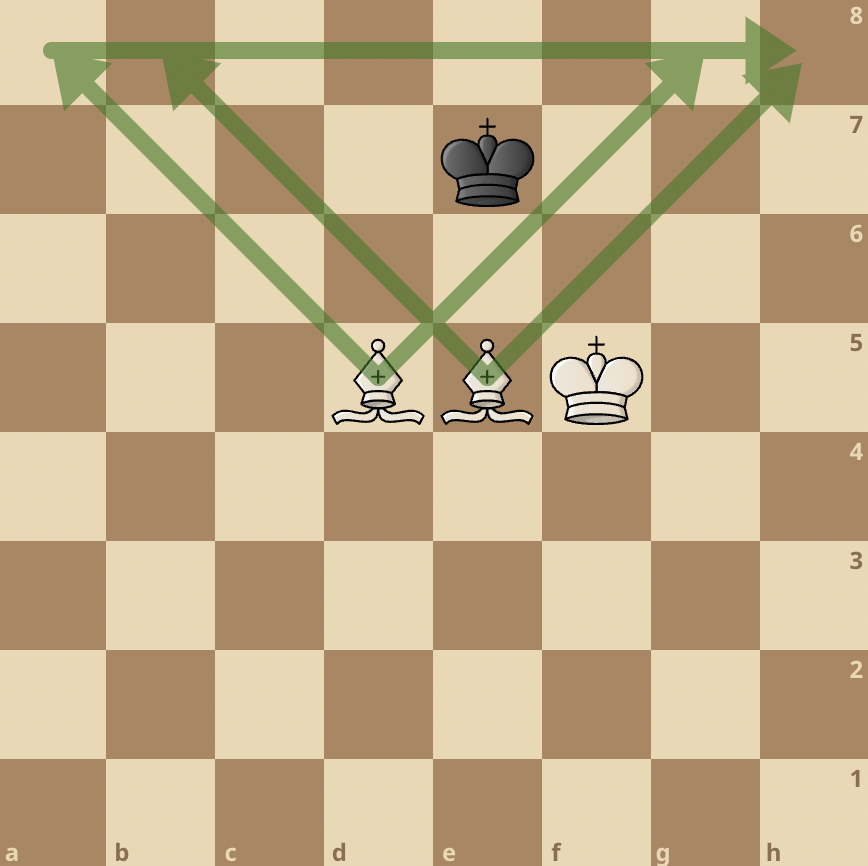
This rule might look quite unusual to an average chess player.
Well, we came up with this theory, because it sums up what you have to do to ensure that the attacked king is pushed back to the edge of the board.
While forcing the king to the edge of the board, temporarily forget about checks. Instead, learn to identify flight squares and limit the king from using these diagonals as escape routes.
As you limit the king with your bishops, the lines controlled by the bishops form a triangle-shaped prison that keeps getting smaller as the attacking pieces advance.
Waiting Moves (Zugzwang)
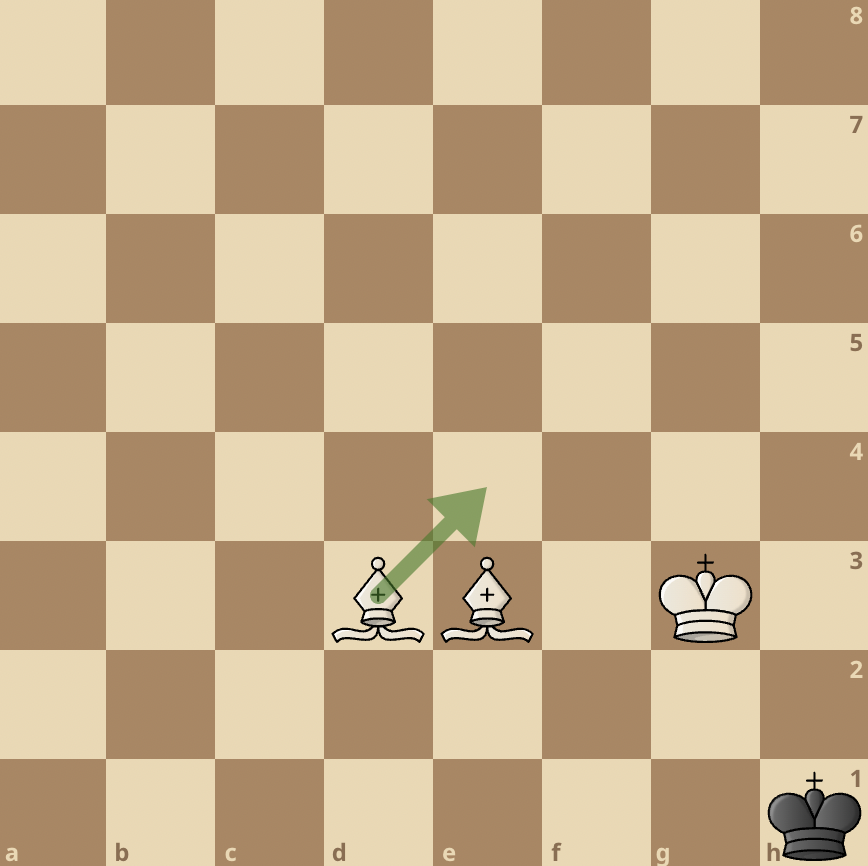
Zugzwang is a word used to describe a situation where your opponent is forced to make a bad move. In other words, whatever they play will lead to their downfall.
In the two bishop checkmate, this rule must be employed to both corner up the king and land the final checkmate blow.
When the attacked king is nowhere near the edge of the board, the bishops assisted by the attacking king should leverage zugzwang to restrict the other king to the edge of the board.
A Step-by-Step Example
We have this sample king + two bishops against lone king position.
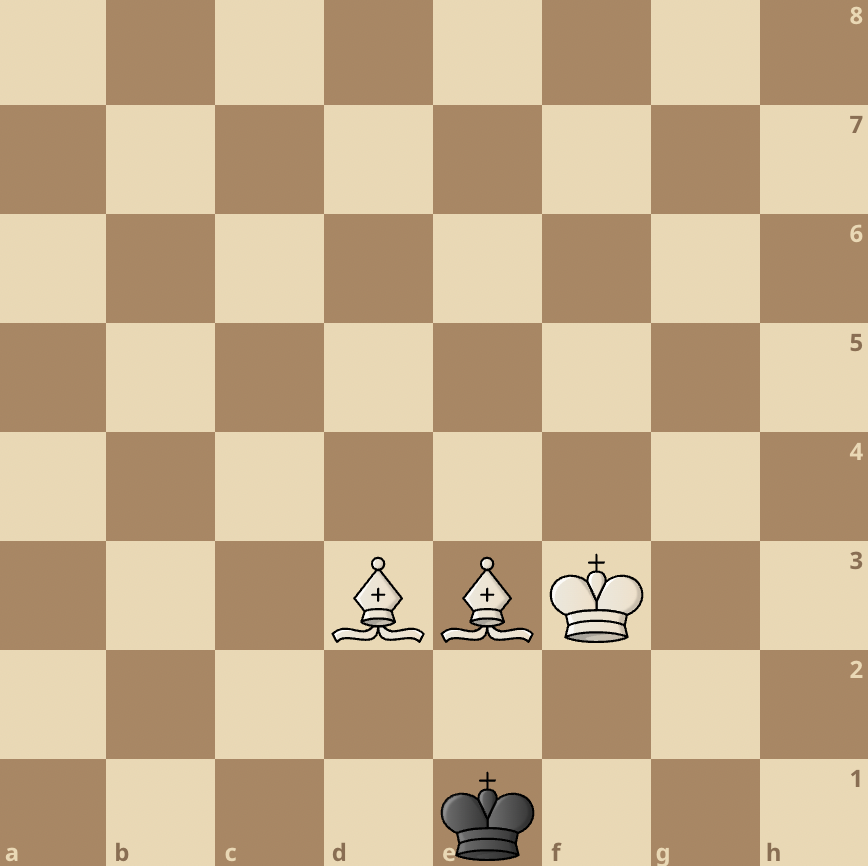
So, White has the two bishops—the light and dark squared bishops—and has to checkmate the Black king with the help of the White king (as discussed earlier).
The only way for White to achieve this mate is to confine the Black king to a corner. Let’s choose the h1 corner for that purpose.
What to play?
1. Bc2 We want the king to go to h1 so we should prevent it from fleeing to the queenside via d1.
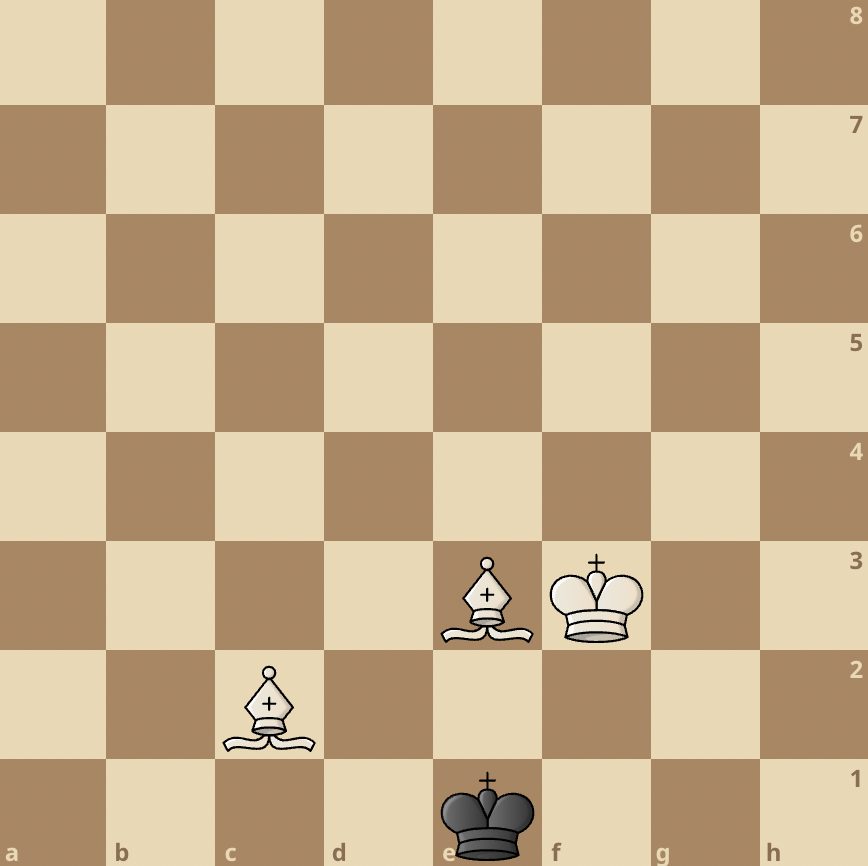
1…Kf1 The only valid move.
2. Bd2 Kg1
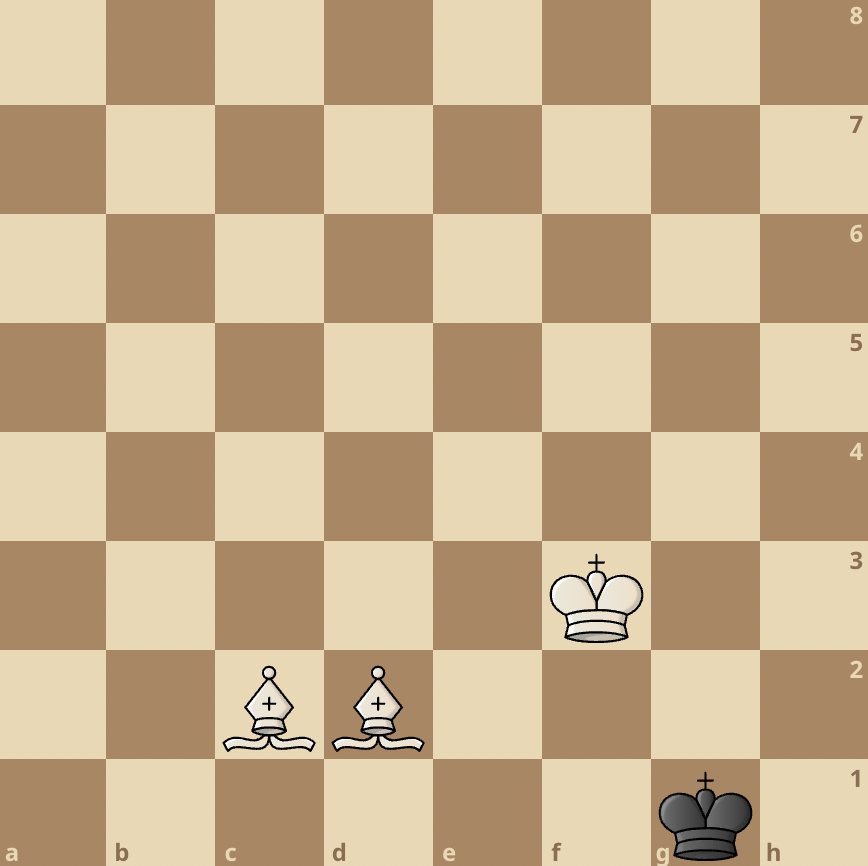
With Bd2, White puts the Black king in zugzwang as it’s forced to move closer to the h1 square.
3. Kg3 Kh1
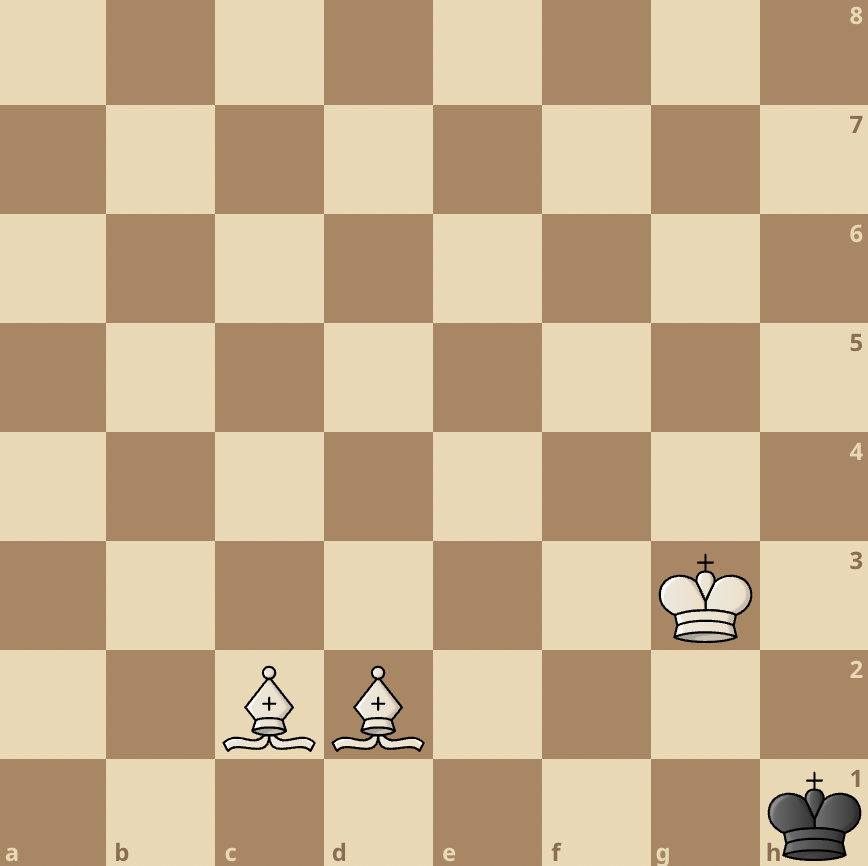
White plays Kg3 to prevent the Black king from escaping via the h2 square.
Black however has a tricky move up his sleeve and plays Kh1 hoping his opponent falls for it.
4. Bd3! This move is given an exclamation mark because it’s the move of an expert who understands that this type of checkmate is ‘slow and steady’.

The alternative and rash 4. Be3?? with ideas of playing Be4# next is a huge blunder that results in a stalemate!
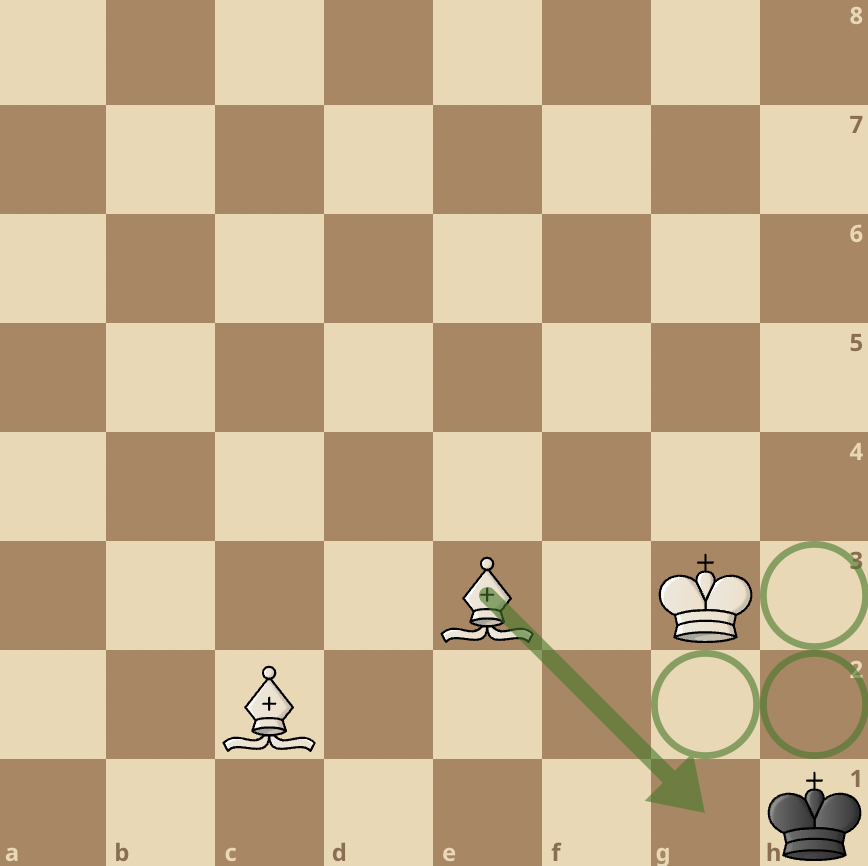
That because, suddenly the Black king doesn’t have any squares to move to. The g2, h2 squares are controlled by the White king and the e3-g1 diagonal is a no-go area. So it’s stalemate.
Do well to watch out for this kind of idea if you’re trying to deliver a two bishop checkmate.
4…Kg1 Black returns and is now mated in two moves
5. Be3+ The best time for this move 5…Kh1 The only valid move
6. Be4#
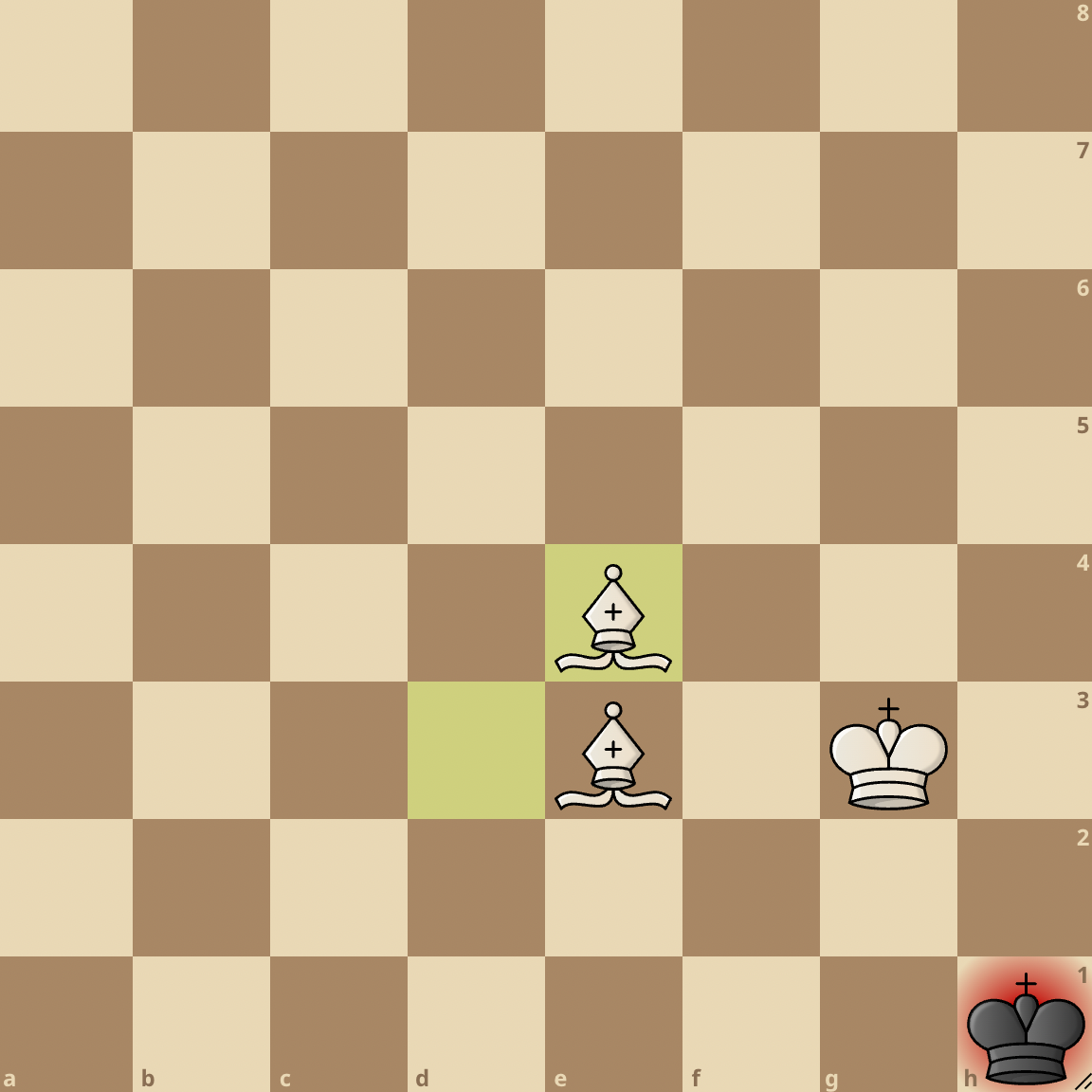
Now, you may be saying: “This is much simpler. What if the opposing king was at the middle of the board? How do I get it to the edge of the board?”
No worries. You can still use the same principles discussed here.
All you have to do is use the principle of opposition by leveraging your raging bishop pair and active king to push back the other king.
Here is a complete random position you can study to get the point better. Click the moves or move the board around for a better interactive experience.
Concluding Thoughts
Unlike the two knights checkmate, the two bishops checkmate is forced if you know how to deliver the full sequence.
By now, we trust that you should be able to handle the two bishop mate anytime anywhere.






join the conversation